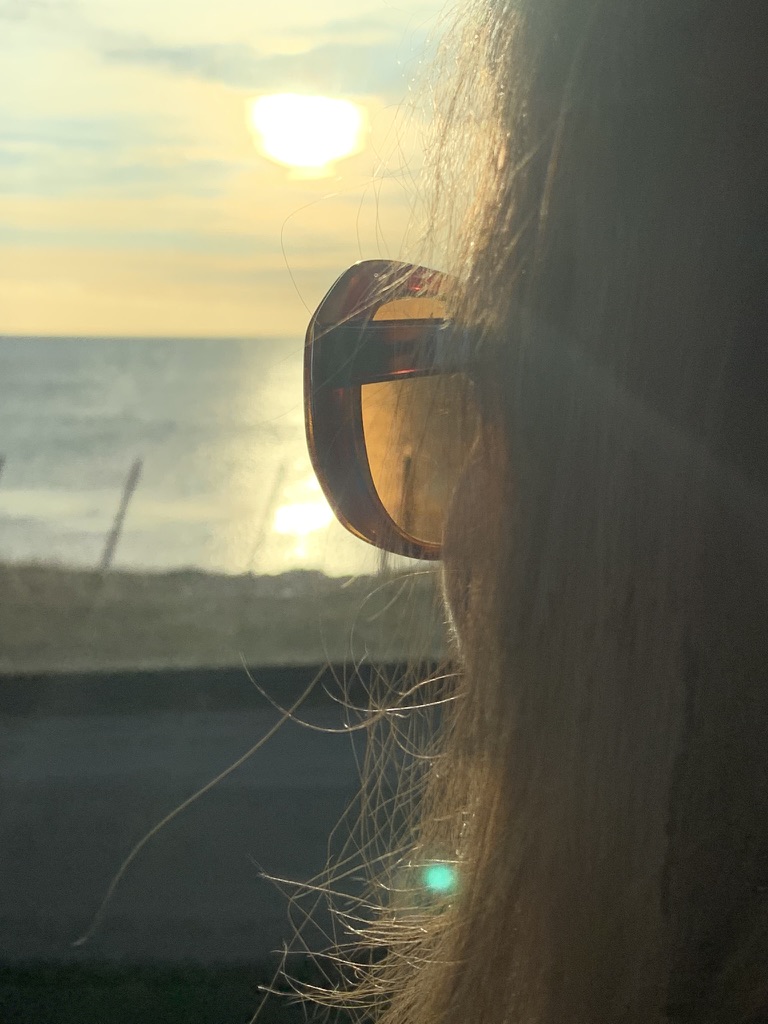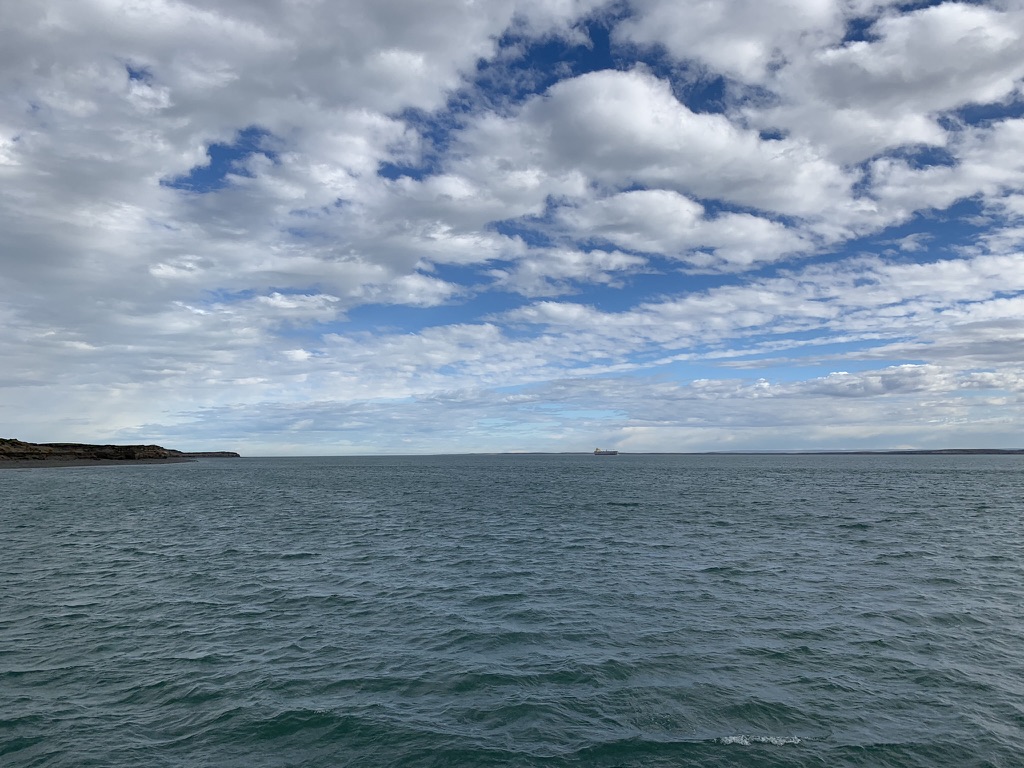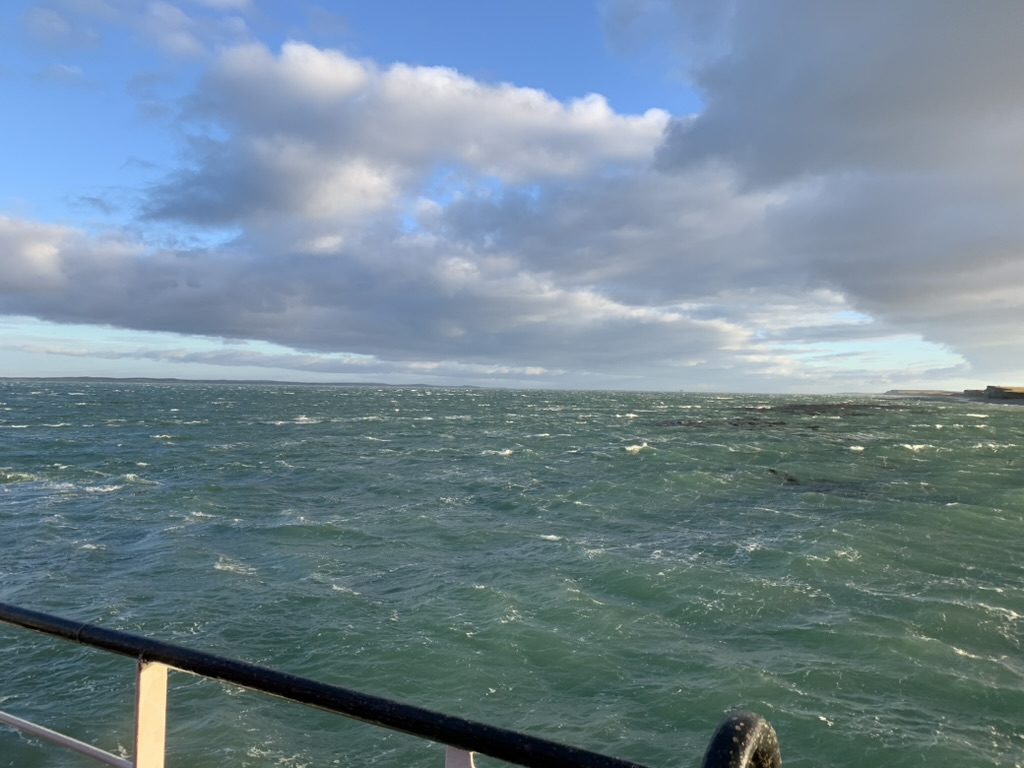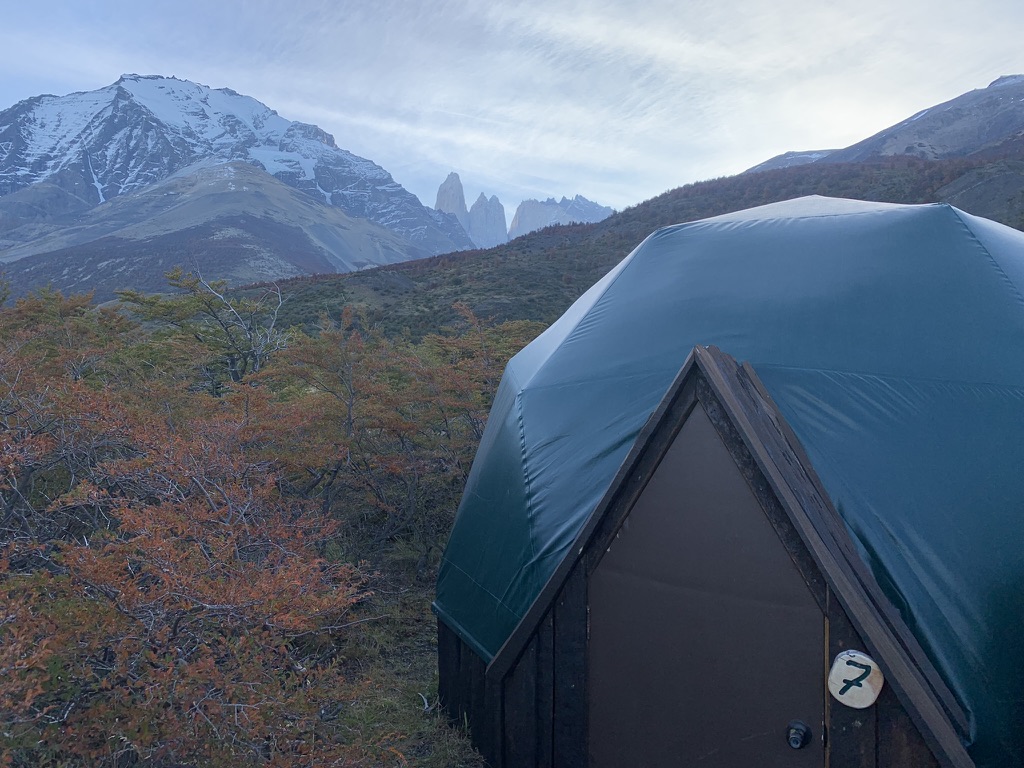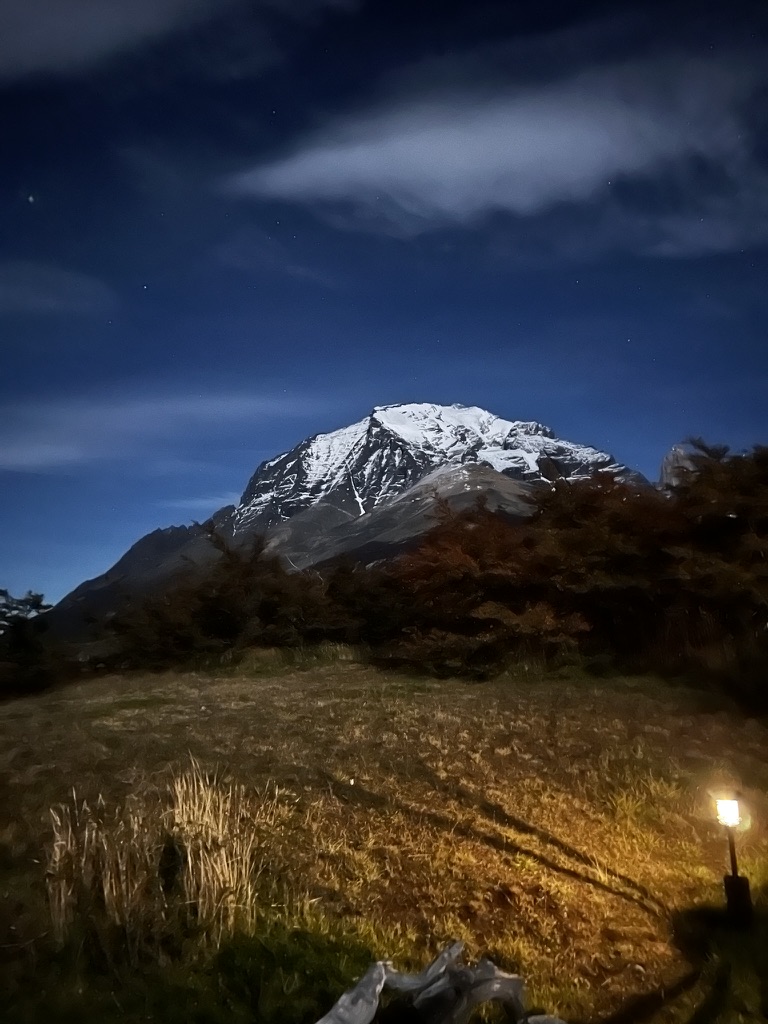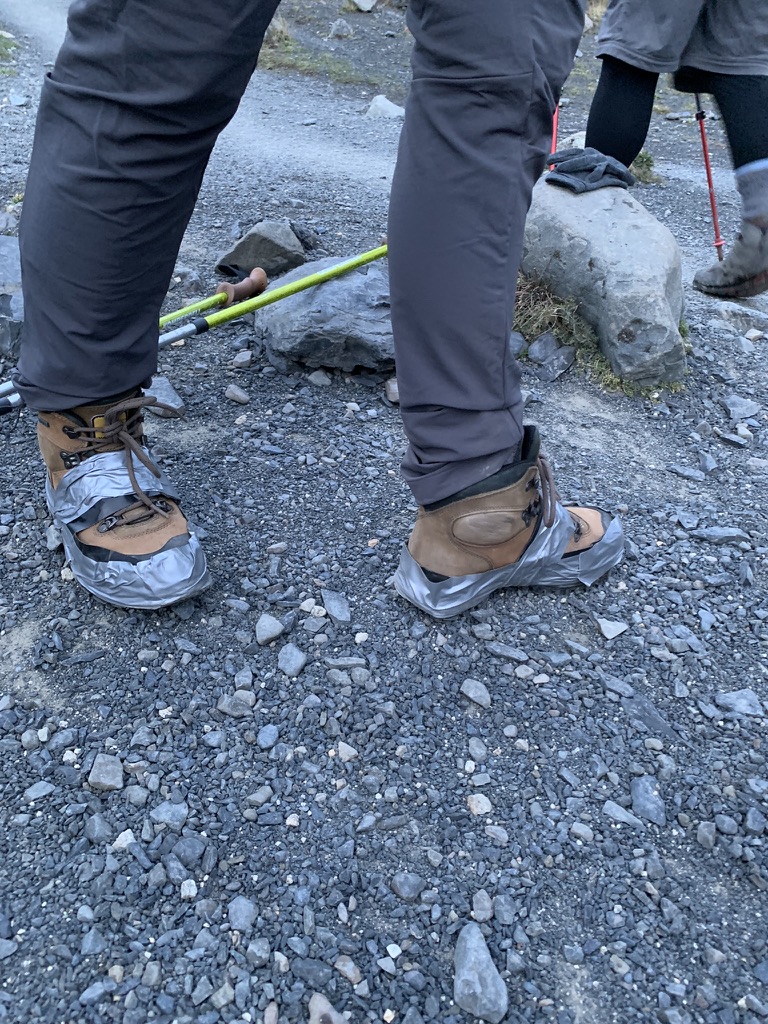
Tiffany had friends who had enthused about hiking in Torres del Paine national park. I’d read ‘In Patagonia’ by Bruce Chatwin when I was a teenager and it had cast something of a spell on me. We both thought Patagonia would make for a memorable honeymoon.
We decided to go in April 2024. There was so much happening during autumn 2023 – my 6oth, Pat’s (Tiffany’s mum) move to Nashville and the wedding itself – that we decided to take a little more time and a little less stress, so we pushed it six months.
The southern hemisphere is entering the fall in April. The weather would still be manageable and being just out of season meant less crowds and less cost. We looked into getting to the Antarctic but the trips stop in March. Hopefully, another time.
The first thing that struck us when we arrived was the quality of the light. Sunrises were late and protracted. Sunsets early and protracted. For the first week we stayed around 53° south. Interestingly, the opposite, 53° north, runs through Nottingham, (UK) and Alaska. I forget just how far north the UK is. I’m used to these hours of sunlight and the sun keeping low in the sky for days on end, but not as stunning a way as this. There was a beautiful light aura as the sun rose (8-10am ish) and before it set (4-7pm ish). For comparison, Nashville is 36° north and has far less variation in daylight hours over the year.
The distances are big. Fuel stops need to be planned. The sky is big. The sea is big. The wind is big, and the weather changes rapidly. We were frequently disorientated trying to work out the points of the compass as the wind seemed to come from the east, not the west, and the sea wasn’t always to the south, when we kept thinking it should be. It only added to the sense of being in a different world. We had a ferry crossing suspended, and were held twice at the Magellan Straits for a few hours because of fog and then high winds. The terrain and the weather determined so much of what happened and how we moved around. It was very elemental and a good reminder of the power of the natural world around you. We were lucky to have no rain to speak of. Scroll or swipe below.
Chile and the Chileans were fabulous. The food was inventive, plentiful and tasty; seafood, fish and meat were locally available and there were lots of berries, rhubarb and even gooseberry ice cream – so good for me then! The wine was invariably delicious and inexpensive, and a local cocktail, a pisco sour, quickly became a favourite. Every evening we’d have one and a bottle of red, and every morning we’d say, with sore heads “we won’t be doing that again” and about 7pm we’d rationalise that we were going to have two glasses of wine each so we really ought get a bottle … again!












Everyone was so nice: Not cheesy nice, just really nice. The challenges of living in places like Patagonia seem to bind people together. The petrol pump attendants were all wrapped up head to toe in puffer clothes, to deal with the cold and the wind, and their faces were weathered and gnarly but they always seemed happy. Big smiles and enough English/Spanish between us to make a connection.
We stayed in some fantastic hotels too. Prices are good so it’s possible to stay in excellent boutique hotels. La Yegua Loca in Punta Arenas was fabulous. Great rooms, fabulous restaurant, lovely staff and close to the city centre. We used it as a bit of a base, staying three different times for a night or two each time. In Puerto Natales we stayed in Simple Patagonia for a couple of nights and in Santiago, Maison Italia 1029
– – – – – – – – –
We divided the honeymoon into three parts: Driving way down south, Torres del Paine hiking, and a couple of days in Santiago.
Driving way down south: We rented a car at Punta Arenas airport and headed into the city for a couple of days rest and relaxation up after the overnight trip from Nashville. Punta Arenas is the world’s most southerly city: Population 124,000 people. Before the Panama canal was built the Magellan Straits were the seaway between the Atlantic and Pacific Oceans, and Punta Arenas was the biggest port on the straits. That was its glory period. Now it is a city of decaying grandeur. It’s still a port; one of the three that serve Antartica, and is the urban centre for the area. We visited the ship museum, which had a replicas of a ship from the first circumnavigation of the globe under Magellen, and the HMS Beagle (the ship that Darwin was on). We drove fifty kilometers south to Fuerte Bulnes, a colony that the Spanish tried to establish in the 1840s, but it failed due to lack of fresh water and the terrible weather. After six years of failure, the settlement was moved north, to where Punta Arenas is now.





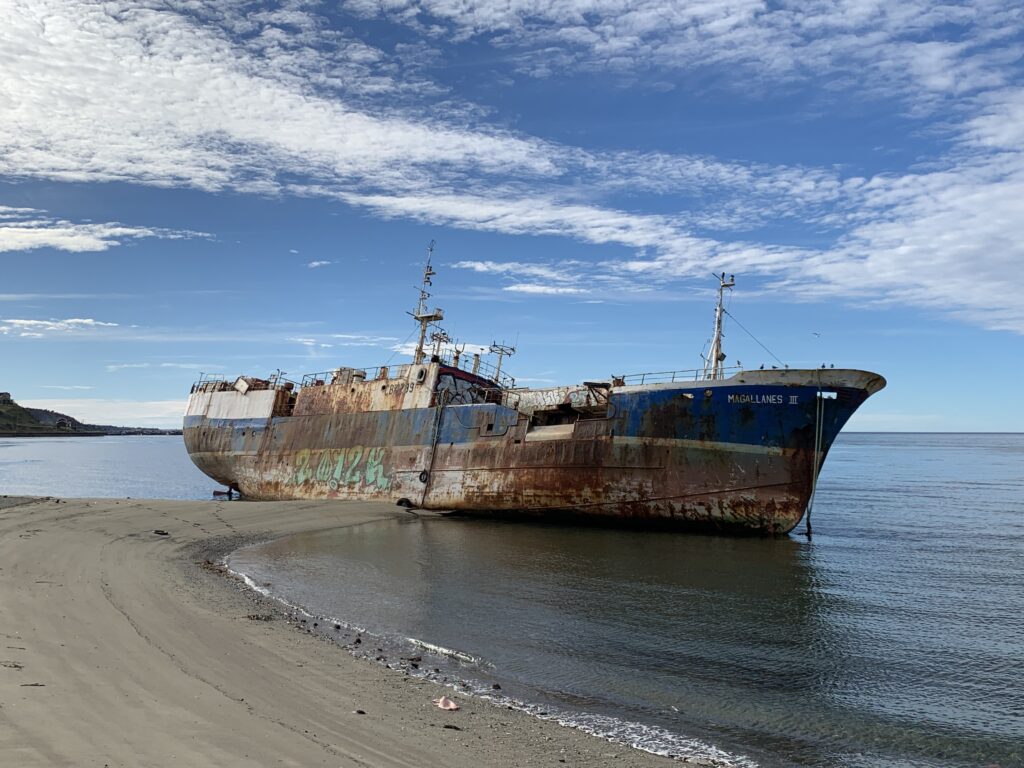

I wanted to spend some time on Tierra del Feugo, at the bottom of the continent, and had booked three nights at a hotel in Ushuaia, the most southerly town in the world. We would be crossing into Argentina, but we were turned back at the border! Our rental car wasn’t insured to be driven in Argentina and we should have submitted the documents seven days in advance to get the appropriate approvals. This was news to us. I checked later, at home, and deep in the details of the documentation it is mentioned, but when was the last time you read through the small print of a rental car papers?!
We had to re-think. We headed north, to Puerto Natales, a small town and primary transit point for Torres del Paine, and had a great couple of days. There were enough coffee stops, restaurants and adventure shops to give the place a modern air alongside its older roots as a port. We had some fabulous views and great walks, notably the Cerro Benetiz, where we spotted a majestic condor keeping an eye on the valley as we hit fog near the summit. We also visited the Cueva del Milodon Natural Monument, where skin and bones of a pre-historic Mylodon were discovered in 1895. That same skin served as the inspiration for Chatwin’s travels, as his grandmother’s curiosity cabinet contained a piece, sent by the grandmother’s cousin, Charles Milward, the British consul in Punta Arenas.





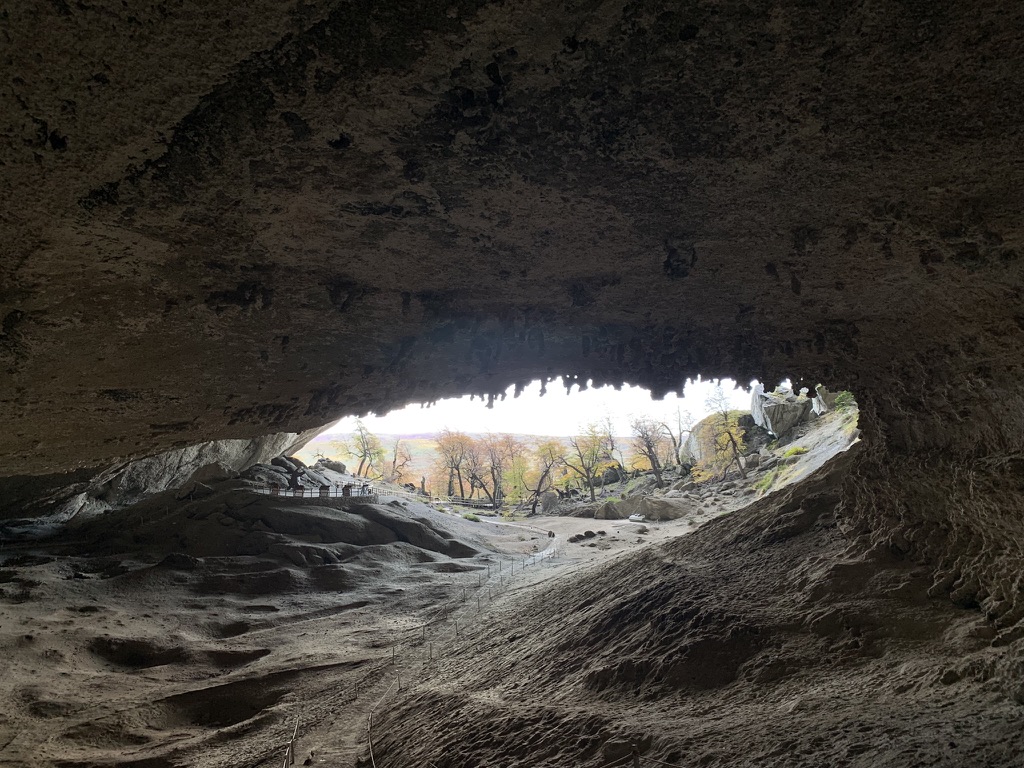




We drove back to Tierra del Fuego. Our excuse, to see the penguin colony on the west of the island. We were delayed again at the Magellan Straits, this time due to heavy winds, which caused us a little concern about getting back to Punta Arenas in time to be picked up for the hiking the following day. We booked a room in Porvenir, the nearest town to the penguins, which looks like an easy 100km by road, but in reality is a pot-holed dirt track which we drove mostly in the dark. The ferry we had booked to get us back to Punta Arenas the next day was suspended due to the continuing winds and the penguin colony was further than we thought, so we had another four hour drive to cross the straits where the ferry was operating, in order to get back to Punta Arenas.
The Pinguino Rey King Penguin Reserve has an interesting story. In 2010 a small colony of King Penguins arrived. It’s not clear where they came from – the nearest colony is 3,000 miles away, and it is a very northerly site for king penguins. They are now protected and have grown in numbers. It’s pretty cool, and Tiffany was VERY happy.

Torres del Paine hiking:
We were picked up from La Yegua Loco in Punta Arenas, and with two other couples were driven to the HQ of EcoCamp in Puerto Natales, where we met our guides and and more fellow walkers, and then onto the Torres del Paine National Park. We had chosen to hike the ‘W’ trail with EcoCamp, who run a sustainable geodesic dome hotel in the park. In our group, there were four couples, two singles and two guides. It was really well organised. The main guide, Felipe, was always bouyant and knowledgeable, and our fellow hikers all had interesting stories to tell. Although we were old enough to be everybody’s parents we were well prepared and didn’t slow the group down. I’ve tried to tell the story of the five days through the captions on the pictures, below, as the scenery was far more captivating than my prose! Scroll or swipe.
A couple of days in Santiago
We stopped for a couple of days in Santiago. Long enough to take in the main sights and a wine tour. It felt like the right amount of time. The city feels European. It is colorful. Graffiti feels ever present: sometimes fantastic, mainly just random. The Museum of Memory and Human Rights, which documents the Pinochet regime and its human rights abuses, and a restaurant called Bocanariz were the highlights for me.



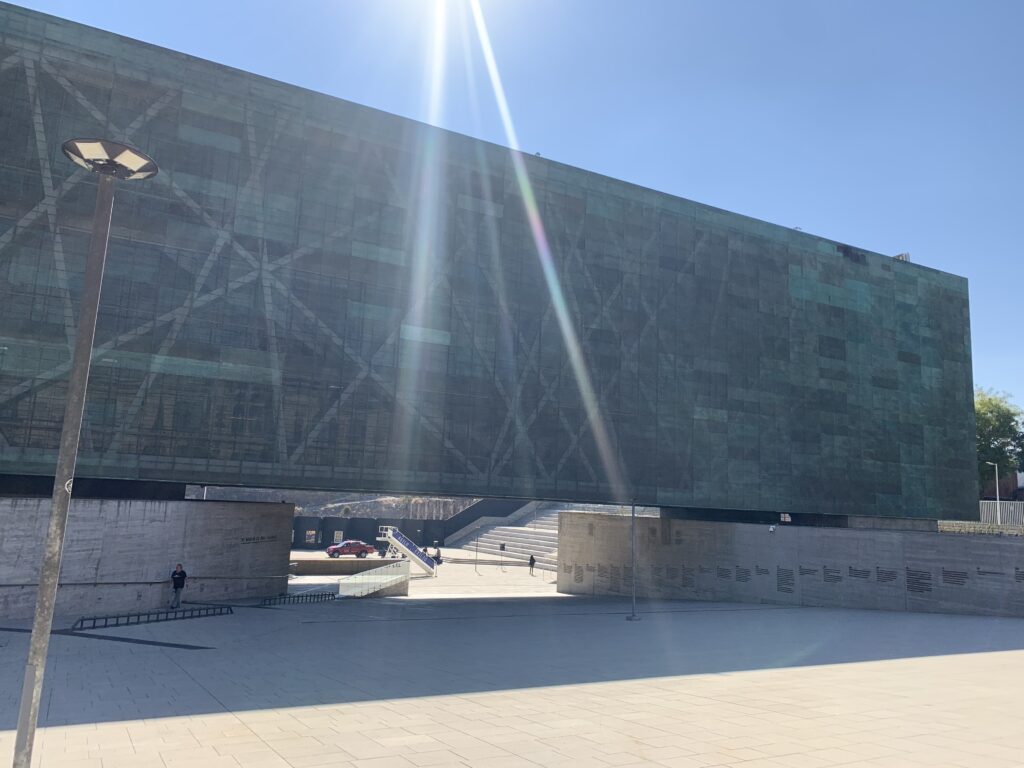
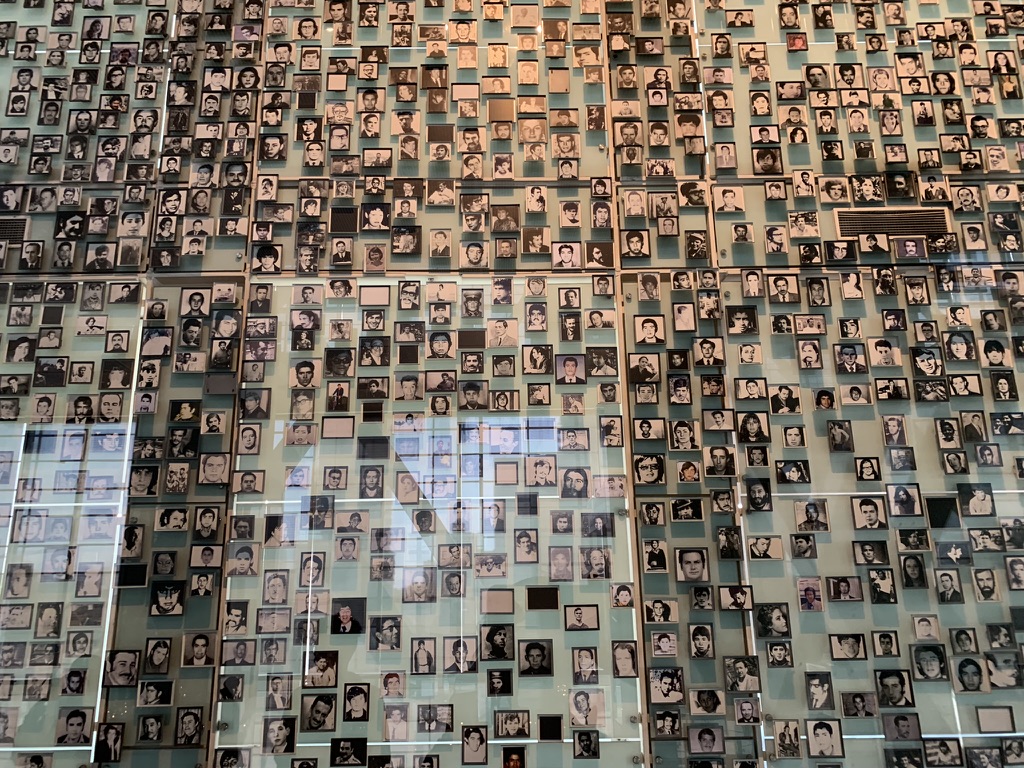
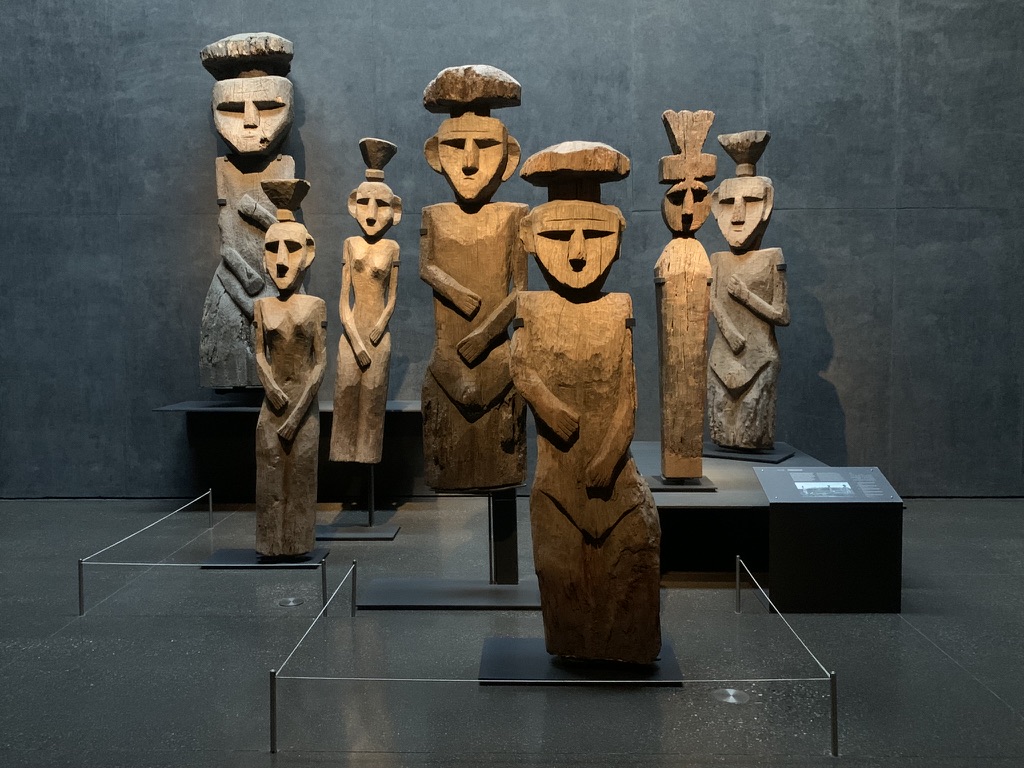




We had a great time, and we plan to return. Tiffany feels she could easily retire to Puerto Natales. I would like to go explore the area more, and next time get across the border, and get to Antartica. It may not be as remote as when Chatwin traveled there but there is still magic in the place, and its people.


